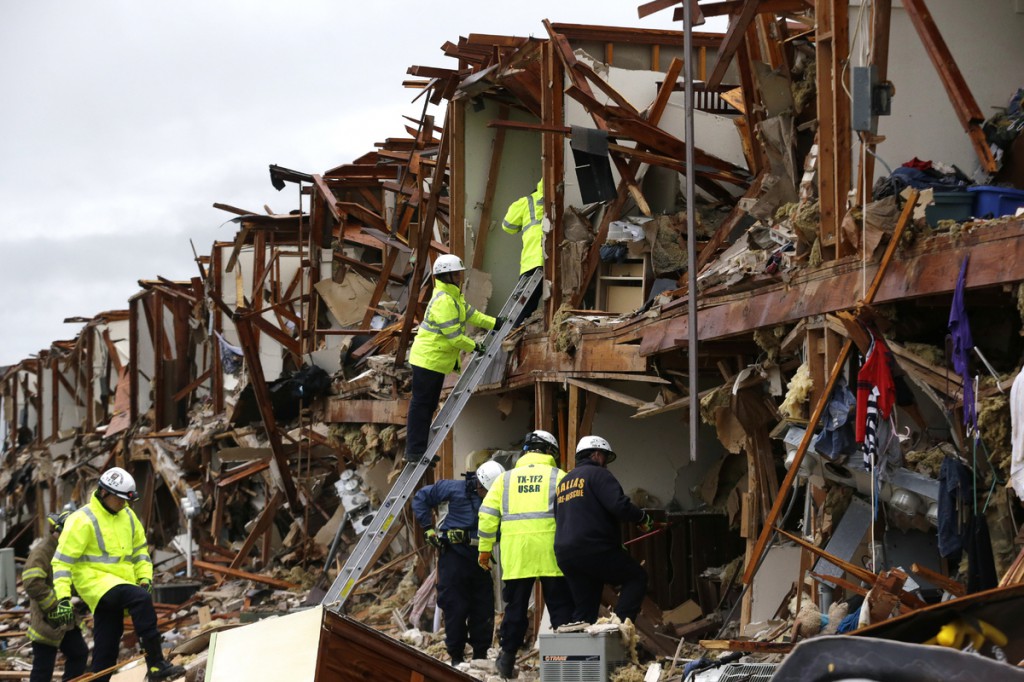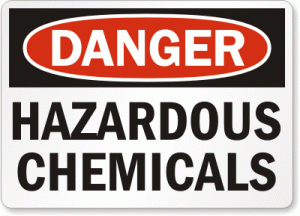Is the Texas explosion OSHA’s fault?

Texas explosion devastated a large section of West, a small town around 20 miles north of Waco [Image Courtesy: Huffington Post]
Mike Elk, a staff writer of ‘In These Times,’ exposed OSHA’s understaffing and safety issues at the plant to Democracy Now.
Elk points out, “Despite there being over 8 million workplaces in the United States, the US only has 2,200 OSHA inspectors. OSHA, on average, could inspect a facility like the West, Texas fertilizer plant once only every 129 years. Indeed, according to OSHA records, the West, Texas plant had not been inspected in the last 5 years.”
Sources also say that OSHA last inspected the plant back in 1985, citing it for improper storage of anhydrous ammonia. It imposed a penalty of $30, although it could have levied fine of as much as $1,000. OSHA also cited the plant for violating respiratory protection standards, but did not issue any fines.

See this sign here.
In 2006, however, Texas Commission on Environmental Quality investigated the plant in response to a citizen’s complaint about an ammonia odor coming from the facility. In the same year, the EPA cited the facility for not having an adequate risk management plan. Prior to the explosion, the facility had a permit to store nearly 54,000 pounds of anhydrous ammonia. Despite this, the company officials filed an emergency planning report with the EPA stating that there was no fire risk or explosion hazard involved at the plant. [Source: Dallas News]
Elk also mentions that incidences like the Texas explosion are bound to happen when a federal safety regulatory body, like OSHA, is severely understaffed. In his article, “Why is Earth Day So Much More Popular Than Workers Memorial Day?”, Elk compares the employee strength of OSHA (2,200) with that of EPA (Environmental Protection Agency) that staffs 17,000 employees, seven times more. According to safety experts, there is a need for at least 12,000 OSHA inspectors to protect 130 million workers in the US.
“Since 1970, there have only been 84 cases prosecuted of willful violation of safety rules that resulted in a worker death. The penalty for wrongfully killing a worker on the job is only 6 months. The maximum penalty for a major safety violation is a mere $7,000. In contrast, tough penalties exist for environmental problems. In 2010 alone, there were 346 criminal prosecutions under federal environmental laws, resulting in 72 years of jail time for the perpetrators and $41 million levied in fines against. In just one year, the EPA has had more prosecutions, convictions, fines and jail time sentenced than in the entire history of OSHA.”, Elk notes. [Source: In These Times]

In 2010, OSHA had a budget of $558.6 million, while the EPA had a budget nearly twenty times its size at $10.3 billion.
The statistics clearly show an imbalance between the government-funding pattern and resources given to the two federal organizations, where one works for environmental safety and the other for workers’ safety. The debatable lopsidedness goes to show that there is a much larger social movement to protect the environment than there is to protect workers in the workplace.
OSHA typically inspects a plant when it gets a call from a worker complaining about poor safety standards of a company. Apart from being understaffed, OSHA might not have inspected West Fertilizer Plant because it is a non-union facility where workers are less likely to report a safety failure for fear of losing their jobs. According to a survey in Michigan, one of the key differences between union and non-union workers is that the former have safer workplace conditions.
Whether OSHA’s timely inspections would have prevented the Texas explosion is debatable. Nevertheless, the facts and statistics indicate that the agency lacks a well-formed regulatory structure and needs more staff to effectively inspect hazardous workplaces in the country.















